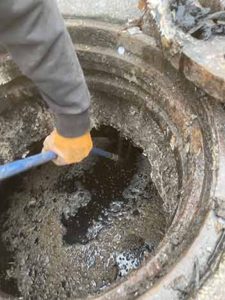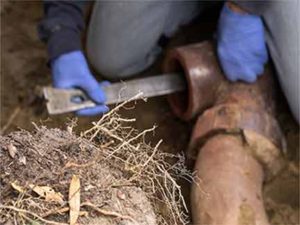Plumbing issues in the home are almost unavoidable. They are the inevitable outcome of the normal use and eventual aging of the plumbing system. Plumbing issues can happen at any time and in almost any part of the home. This is because the plumbing in your home extends throughout the house, as TE Johnson & Sons explains, so problems are not limited to just one part of the building.

Plumbing issues come in different forms. They may take place unseen behind an appliance or feature of the home. When this is the case, a plumbing problem can do secret harm and it could take some time before it is discovered. Other times, a plumbing problem is self-evident because it happens in a way that completely disrupts the normal use of the plumbing.
This second type of plumbing problem creates what is known as a plumbing emergency. These are issues that are so distressing that they must be dealt with immediately. Plumbing emergencies not only prevent the normal use of the plumbing, but they also damage the other features of your home. A sewer backup problem is perhaps the number one plumbing emergency in the home.
What is a sewer backup?
Sewer backups happen when the normal flow of wastewater from the home is prevented by a blocked or damaged sewer line. When a sewer line is blocked, its contents don’t flow into the municipal sewer lines as it should. Instead, it is trapped inside the pipes on your property. If those pipes become full, their content eventually starts to overflow inside your home.
A sewer backup is easily the most disgusting type of plumbing problem because it will release the gross contents of a sewer line into your home. Sewer backups are so damaging that out-of-pocket cost for fixing the problem is often between $2,000 and $10,000. But the good news is the problem can be prevented.
How to prevent sewer backups
Watch what you flush down the drain
Your home’s drainage system does not have the capacity to handle everything you throw at it. In fact, most items labeled “flushable” will create problems for the drain. The only thing you should flush down the toilet is toilet paper, not wipes, sanitary towels, disposable diapers, or feminine products.
In the kitchen avoid putting grease, oil, fat, eggshells, potato, rice, fibrous vegetables, and coffee grounds into the drain. Also, do not let hair get into the shower drain.
Protect sewer lines from tree roots
The roots of plants and even small bushes pose a major threat to your sewer lines. The wastewater inside sewer lines provides a rich source of nutrition and tree roots will invade any place where there is water and nutrition.
If allowed to grow close to the sewer line, plant roots can puncture the pipe and eventually block it. To prevent this, don’t plant trees or bushes near sewer lines and laterals. You can also prevent tree root damage by using plastic piping.
Do not divert excess rainwater into the sewer
Diverting the water from downspouts, the sump pump, French drains, and your flood control systems into the sanitary sewer line might seem like a good idea. It feels like an easy way to prevent water pooling in your yard. But it is actually a bad idea because rainwater can overwhelm the drain and cause flooding in your home. By diverting the downspout into the sewer, you could be unintentionally channeling floodwater into your house.
Install a sewer backflow valve
This serves as the last line of defense against sewer backups. The backflow valve installation will let wastewater flow out of your home into the sewer line but will prevent the sewer contents from flowing in the opposite direction. When backs happen up due to a damaged or blocked line and because of heavy rains, the valve automatically closes the channel.
Install an exterior cleanout
An exterior cleanout offers a cost-effective way to deal with sewer problems. They are often located in the yard and can be identified by their round cap. Most are made of vitreous clay pipe and installed flush with the ground.
An external entry point to the main sewer line makes the work of cleaning sewer lines or removing blockages easier. An outside cleanout helps prevent water and pipe damage, and if a problem does happen, it cuts your repair costs since the repair is done from inside the cleanout.
Inspect and fix old pipes
The probability of sewer backup increases with damaged lateral lines. The only way to be sure your sewer line is in good condition is to have it inspected by an expert once a year. If the line is damaged, you have three options for solving the problem. Lining the pipe is an effective way to solve minimal issues with the lines. For more serious issues the next option is pipe bursting. Both pipe bursting and pipe lining do not involve excavation. But if the problem is major, the only way to solve it may be to dig up the yard and replace the sewer line.
